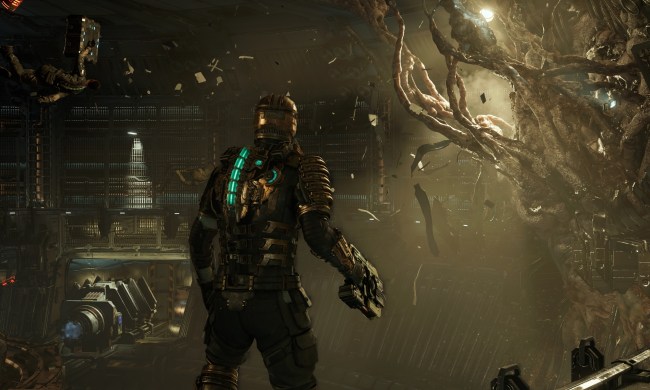The Metroidvania genre — known for crossing elements of Super Metroid and Castlevania: Symphony of the Night — has seen a boon among indie developers in recent years. It’s a testament to how influential some games from the SNES and PlayStation are, but also an opportunity for budding developers to flex their game-design muscle. Open-ended exploration and an interconnected world are the names of the game when it comes to Metroidvanias, and our list of the best Metroidvania games features 12 excellent examples of that.
Before diving in, note that we limited our list to games that are commercially available on PC and current-gen consoles.
Further reading
Hollow Knight
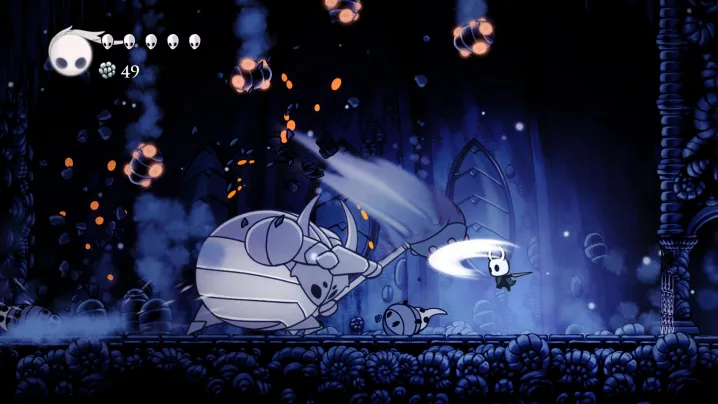
Hollow Knight does everything right. The death loop is like Dark Souls and the level design is like Super Metroid, but in the midst of games trying to emulate those two, Hollow Knight feels surprisingly new. Developer Team Cherry clearly understands what makes its influences tick. The result is a game that wears its influences on its sleeve without being afraid to forge its own path.
And forge a path it does. Everything in Hollow Knight works together to create a seamless world that you want to explore. Like Dark Souls, Hollow Knight hands out story beats like hors d’oeuvres, giving you a small hint at what’s below the surface. The difference between it and similar games is that Hollow Knight actually has things going on below the surface. The depths of Hallownest are rife with detail, with imaginative boss designs and even more interesting NPCs. Plus, Hollow Knight has four massive pieces of DLC, and all of them are included in the game for free.
The Messenger

The Messenger is often cited as a platformer that only turns into a Metroidvania halfway through. If you’re not familiar, The Messenger starts as an homage to Ninja Gaiden, with linear platforming and combat drenched in a Ninja theme. Halfway through the game, it jumps from 8-bit to 16-bit — not the first or last time The Messenger breaks the fourth wall. The second half of the game forces you to jump back and forth between eras as you explore the levels you’ve already visited in typical Metroidvania fashion.
The Messenger is a Metroidvania all the way through, though. Exploration just isn’t possible at first. Instead of handing out different exploration-related upgrades piecemeal — the case for most other games in the genre — The Messenger gives you everything at once. Exploration isn’t an option in the game; it’s a part of the game. Even among a list of the best Metroidvania games, The Messenger stands out by nudging players toward the fun. It serves as a nice change of pace for genre veterans, as well as an easily digestible starting point for newcomers.
Ori and the Blind Forest
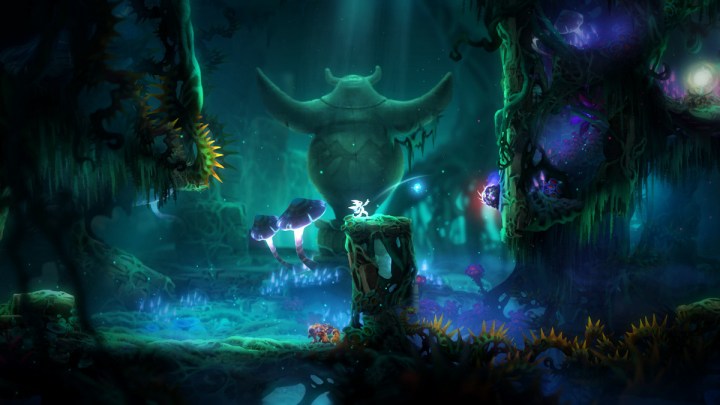
Ori and the Blind Forest is a beautiful game, and its sequel, Ori and the Will of the Wisps, is just as good. We’re giving this slot to the original game, though. The game begins with a 10-minute opening section that will fill your heart with warmth before ripping it out of your chest. Metroidvanias usually aren’t strong in the story department, but Ori and the Blind Forest changes that. It has a dramatic and moving narrative that’s never cheesy or pretentious.
That comes down to atmosphere. Blind Forest‘s hand-drawn world feels organic, threatening, and beautiful, usually all at the same time. It’s a masterclass in world design and narrative, all set to the backdrop of Metroidvania-like exploration and platforming. If you’re new to the series, we recommend starting with Blind Forest. The story continues in the second game, and although Will of the Wisps has boss encounters and even more mechanics, that doesn’t undermine just how great Blind Forest is.
Iconoclasts
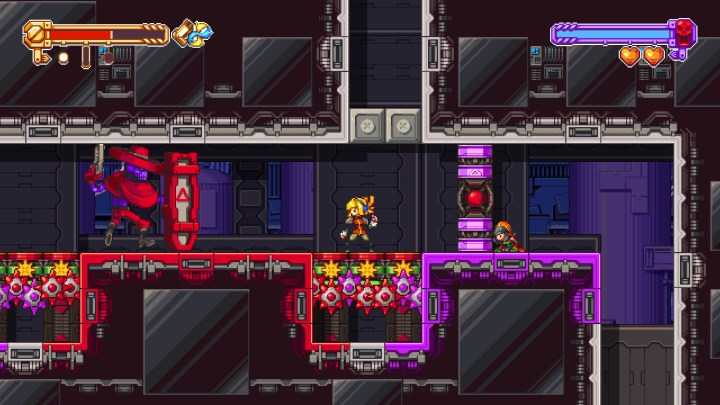
Iconoclasts is only a Metroidvania upon further inspection. The world is interconnected, and various upgrades for the protagonist Robin unlock different areas of the map. That’s not the crux of the game, though. Iconoclasts brings wonderfully complex puzzles into the fold, taking the focus off of using new abilities and bringing it to how to use those new abilities. The story is shockingly good, too. You play as Robin, an unlicensed mechanic in a world where only licensed mechanics are allowed to handle Ivory (the power source behind the game’s many machines). Against a government soaked in an unjust religion, your job is to fight back.
Like Axiom Verge, which we’ll get to in a moment, Iconclasts was made by a single developer. Joakim “konjak” Sandberg is behind the game’s design, coding, and music.
Dead Cells

You can define Dead Cells with almost every detested buzzword in the gaming industry, and it’s still a great game. It’s a roguelike Metroidvania with procedural generation and branching paths (we warned you). None of that makes Dead Cells special, though. It’s a combination of progression systems and feel that set Dead Cells ahead of the pack.
Even after you’ve died and run through the same levels over again, Dead Cells lets you know that you’re making progress. Items you’ve unlocked show up in the prison at the beginning of each run, and between biomes, the game forces you to pour all of your Cells — one of the currencies in the game — into upgrades. As for feel, Dead Cells actually feels a little clunky at first. Jumping, in particular, isn’t as “floaty” as it is in other Metroidvanias. Once you get a handle on the controls, though, you’ll feel like a master of the game.
Read our Dead Cells review
Bloodstained: Ritual of the Night
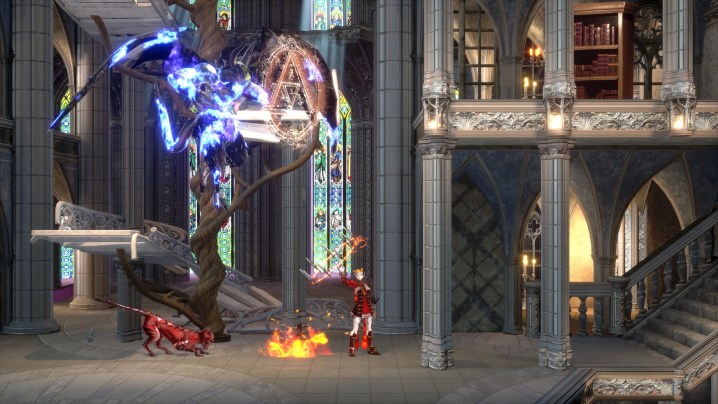
It’s hard not mentioning a modern Metroidvania created by a developer who helped define the genre. Bloodstained: Ritual of the Night is a sidescroller from Koji Igarashi, the programmer and designer behind Symphony of the Night. Knowing that, Bloodstained‘s title should tell you everything you need to know. Ritual of the Night plays like a Castlevania game because it basically is one.
Exploration is key, of course, but Ritual of the Night stands out from our other entries with different weapons and spells, as well as a full upgrade system. The game doesn’t play the Metroid role well, but for Castlevania fans, there’s nothing better. If you prefer a more retro aesthetic, Bloodstained: Curse of the Moon and its sequel offer bite-sized, 8-bit experiences that take place in the same world.
Axiom Verge

Axiom Verge is to Metroid what Ritual of the Night is to Symphony of the Night. And it gets things right. Part of the reason Axiom Verge is so intriguing is that the game gives you very little to go on. The game opens with a harrowing scene of a research lab in New Mexico, broken to pieces by some untold force. It sets up a lot of questions and gives very little answers, paving the way for the rest of the game to play out.
Axiom Verge is always one step ahead of the player, giving out just enough plot details to keep the player going. The game clearly has Metroid written all over it, but it’s not afraid to break the mold. An arsenal of weapons and some unique abilities push Axiom Verge beyond its source material, making for a game that feels more like a love letter than a ripoff. Even more impressive, the game was made by a single person. Tom Happ is responsible for all of the coding, art, music, and game design. If you’re interested in playing Axiom Verge, you should jump on it fast; Axiom Verge 2 is slated to launch later this year.
Blasphemous
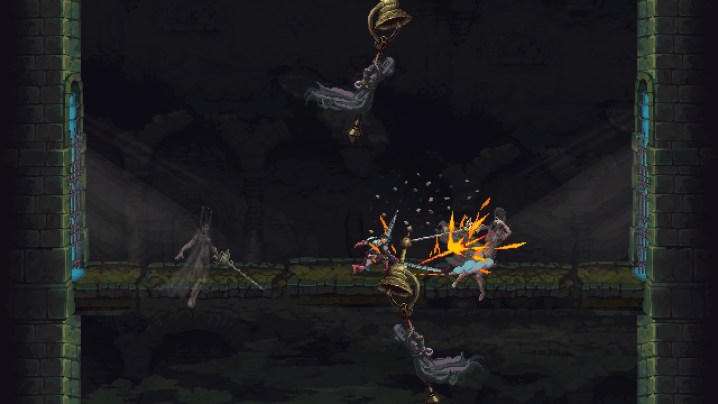
Blasphemous is a game that sticks with you. It doesn’t apologize for its overt religious themes and high Gothic imagery, making for a game that’s equal parts intriguing and unsettling. Like Hollow Knight, developer The Game Kitchen has supported Blasphemous with free, post-launch DLC, all without charging a dime more for the game. If you’re looking for a Metroidvania that takes things a little more seriously, Blasphemous is for you.
Imagery is the game’s strong point, though. Mechanically, it plays like a 2D Dark Souls, fit with a bonfire saving system, ruthless difficulty, and similar swordplay. The mechanics are executed well, but Blasphemous doesn’t break the mold.
SteamWorld Dig 2

Saying SteamWorld Dig 2 is a sequel to SteamWorld Dig is like saying The Dark Knight is a sequel to Batman Begins. It’s true, technically, but it undermines just how much better the second iteration is. Instead of a procedurally generated world like the first game, SteamWorld Dig 2 has a large, static map. Over other Metroidvanias, Dig 2 stands out with its titular traversal mechanic. There are open platforming sections, but most of your time in Dig 2 is spent digging into the Earth to uncover passageways and hidden areas.
The loop of digging and coming back to the surface to sell loot and buy upgrades is addicting, and even more so with the world design and art style. SteamWorld Dig 2 brings together old and new in a way few other titles have.
Guacamelee!

Guacamelee is a lot like Hollow Knight. From a design standpoint, it borrows liberally from Super Metroid. Interconnected levels reveal new upgrades, which allow you to journey deeper into the map. Like Hollow Knight, though, Guacamelee isn’t concerned with emulating the past. In a sea of pixel-art platformers, Guacamelee goes with a hand-drawn world, and instead of guns and missiles, the game is focused on hand-to-hand combat. That’s not to mention its thoroughly enjoyable lucha libre theme.
Read our Guacamelee! review
Supraland

Supraland describes itself as a “mix between Portal, Zelda, and Metroid,” and we can see elements from all of those games. It’s not impressive that Supraland has so many influences, but that it manages to balance them at all. Portal-like puzzles pave the way to Metroid-like secrets, all with a Zelda-like upgrade system. Supraland is all about exploration, and it manages to encourage that more so than any other Metroidvania of recent memory.
It’s not another 2D platformer, either. Supraland is among a small handful of games — Metroid Prime comes to mind — that properly bring the sense of 2D exploration into the third dimension. It’s the most unique game on our list, by far, but it’s also one of the best.
Yoku’s Island Express

Yoku’s Island Express has all of the tenets of a Metroidvania — branching objectives, a large map with plenty to explore, and platforming sections. The difference is that you traverse the map with pinball mechanics. You play as Yoku, who’s recently arrived on Mokumana as a postal worker. Yoku is tied to a ball, and instead of jumping and dashing, you use pins and bumpers to get around.
There are a lot of reasons to like Yoku’s Island Express, from the different characters you meet on your journey to the game’s whimsical art style. Pinball is the core of the game, though. Without precise control over platforming, you’ll often find yourself in a completely different area of the map. Instead of being frustrating, ending up in a different spot is exciting, giving you an opportunity to explore an area you might not have visited otherwise. Creative and wonderfully crafted, Yoku’s Island Express is a must-play.



